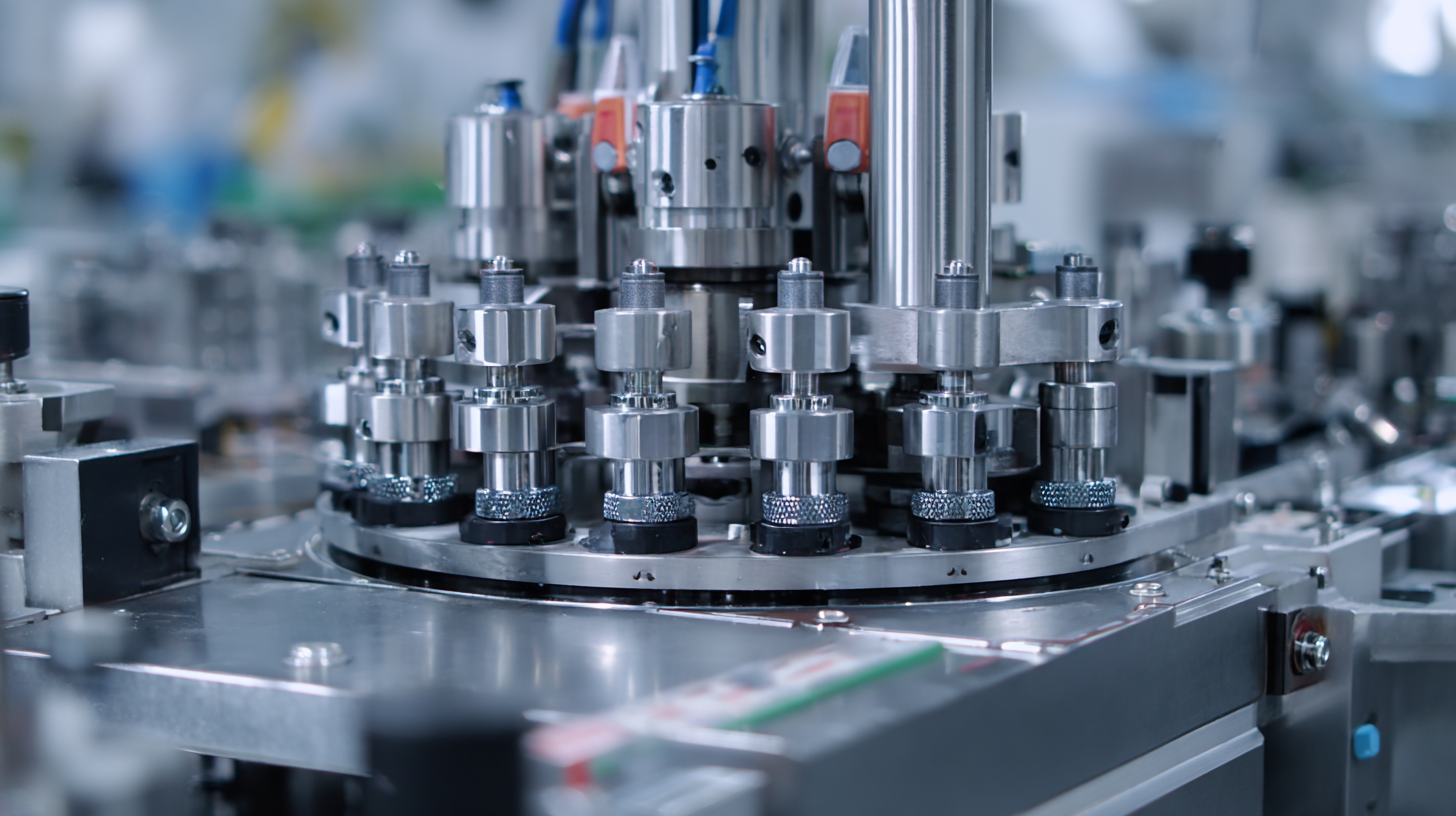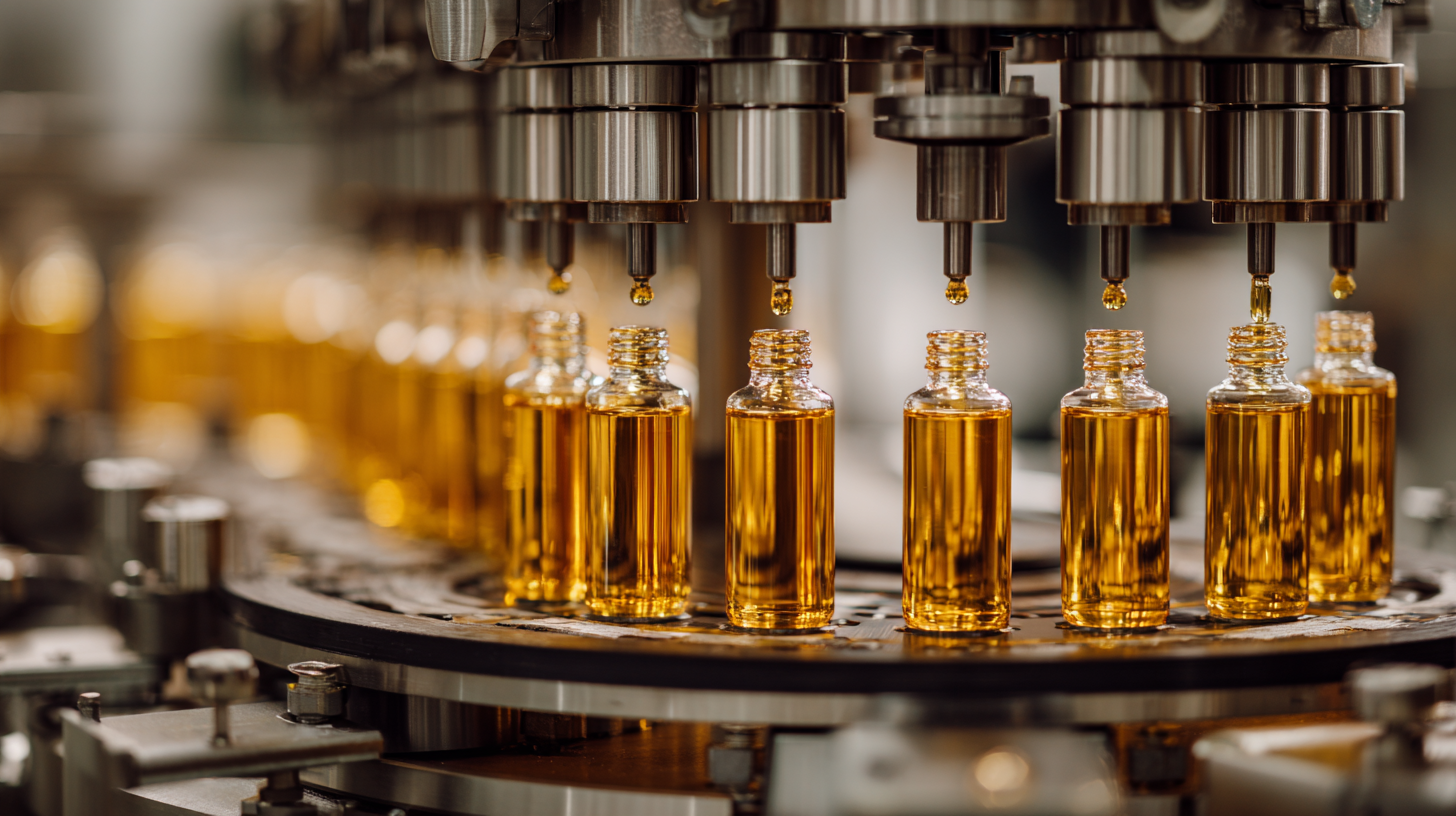Exploring Innovative Alternatives to the Best Automatic Filling Machine
In the rapidly evolving landscape of manufacturing and production, the demand for efficient and reliable equipment has never been more critical. The automatic filling machine, a cornerstone of numerous industries, from food and beverage to pharmaceuticals, is continuously subject to innovation and enhancement. According to a recent report by Market Research Future, the global automatic filling machine market is expected to reach $6.3 billion by 2025, growing at a CAGR of 6.8%. This surge underscores the vital role that automatic filling machines play in streamlining production processes and maintaining quality standards. However, as industries seek to optimize operations and reduce costs, exploring innovative alternatives to conventional automatic filling machines becomes essential. This ultimate guide aims to dissect emerging technologies and innovative solutions that promise to redefine the filling process, ensuring manufacturers stay competitive in a dynamic market.

Innovative Technologies Transforming Automatic Filling Machines
The landscape of automatic filling machines is witnessing a remarkable transformation driven by innovative technologies. One of the most significant advancements is the integration of artificial intelligence (AI) and machine learning. These technologies enable filling machines to adapt and optimize their operations over time, enhancing precision and reducing waste. With AI algorithms analyzing data from previous runs, machines can adjust filling volumes and speeds in real-time, ensuring that products are filled consistently and accurately.
Additionally, advancements in IoT (Internet of Things) technology are revolutionizing the way automatic filling machines operate. IoT-enabled devices can provide real-time monitoring and analytics, allowing operators to track performance metrics remotely. This connectivity not only improves efficiency but also facilitates proactive maintenance, reducing downtime and maintenance costs. As a result, manufacturers can ensure higher productivity and maintain stringent quality standards, thus responding more effectively to market demands. With these innovative technologies at the forefront, the future of automatic filling machines is set for greater efficiency and reliability.
Exploring Innovative Alternatives to the Best Automatic Filling Machine
| Technology | Description | Advantages | Applications |
|---|---|---|---|
| Magnetic Levitation Filling | Uses magnetic fields to control and guide the filling process for high accuracy. | High precision, reduced wastage, low maintenance cost. | Pharmaceuticals, cosmetics, and high-end beverages. |
| Ultrasonic Filling | Employs ultrasonic waves to assess the level of liquid during filling. | No contact with the liquid, high accuracy in level detection. | Food industry, personal care products. |
| Robotic Filling Systems | Automation using robotics to enhance the filling process. | Increased speed, reduced labor costs, flexibility in packaging. | E-commerce, diverse product lines. |
| Gravity Filling | Utilizes gravity to fill containers from overhead hoppers. | Simplicity, low power requirement, suitable for thick liquids. | Thick sauces, oils, and creams. |
| Pressurized Filling | Uses pressurized air or gas to fill containers swiftly. | Fast filling, effective for carbonated products. | Soft drinks, sparkling wines. |
A Comprehensive Comparison of Top Alternatives for Automatic Filling Solutions
In the rapidly evolving landscape of packaging technology, businesses are continuously seeking efficient alternatives to traditional automatic filling machines. A recent industry report by Smithers Pira indicates that the global market for liquid filling machines is projected to grow at a CAGR of 4.5% through 2025, reflecting a surge in demand for more versatile and sustainable filling solutions. This trend has spurred innovations such as semi-automatic filling systems and volumetric filling machines, which provide greater flexibility for small to medium-sized enterprises while significantly reducing investment costs.
Additionally, advancements in smart technology have paved the way for more efficient filling processes. According to Allied Market Research, the smart packaging market, which often incorporates automatic filling solutions, is expected to reach $41.7 billion by 2026. This shift not only enhances operational efficiency but also improves accuracy, with newer machines boasting precision rates of over 99%. As businesses evaluate their packaging needs, exploring these innovative alternatives can lead to enhanced productivity and reduced waste in production lines, ultimately supporting a more sustainable approach in the industry.
Evaluating Efficiency: How Different Machines Stack Up Against Each Other
When comparing automatic filling machines, efficiency is a key metric that significantly impacts productivity and operational costs. Different machines come with varied features and technologies that cater to specific needs, leading to a vast array of choices. For instance, volumetric fillers tend to be precise for liquid products, while auger fillers excel with powders. Evaluating these differences is crucial for businesses aiming to maximize output and reduce waste.
**Tip:** When assessing machine efficiency, consider factors such as speed, accuracy, and ease of maintenance. Machines that are easy to clean and service often lead to less downtime and enhanced productivity. Additionally, look for models that offer adjustable filling volumes, as this versatility can be invaluable when handling a range of products.
As you explore alternatives, it’s also essential to evaluate the scalability of each option. Some machines are designed to grow with your business, allowing for quick adjustments to the changing demands of production. Leveraging technology, like smart sensors for monitoring fill levels, can further enhance operational efficiency.
**Tip:** Always request a demo or trial period to see the machine in action under your specific production circumstances. This hands-on experience can highlight the pros and cons that specifications alone may not reveal.

Cost-Effectiveness Analysis of Leading Automatic Filling Machine Alternatives
When considering alternatives to the traditional automatic filling machines, it's essential to analyze the cost-effectiveness of various options available in today's market. Recent industry reports indicate that semi-automatic filling machines can reduce operational costs by up to 30% compared to their fully automated counterparts. For businesses with lower production volumes, this can result in significant savings without compromising efficiency. Furthermore, innovations in the technology of these machines, such as user-friendly interfaces and greater versatility, enhance their appeal for small and medium-sized enterprises (SMEs).
Another noteworthy alternative is the integration of robotics and artificial intelligence in filling processes. A 2023 study from the Packaging Machinery Manufacturers Institute reveals that companies adopting robotic automation have witnessed productivity boosts of 20-25% alongside decreased labor costs. This transformation not only streamlines filling operations but also improves precision, thereby reducing product waste. As the industry continues to evolve, businesses are encouraged to explore these innovative solutions that align with their budgetary constraints while maintaining quality and adaptability in filling operations.
Cost-Effectiveness Analysis of Leading Automatic Filling Machine Alternatives
User Experience: Insights from Real-World Applications and Case Studies
In recent years, the demand for automatic filling machines has surged, leading industries to seek innovative alternatives that enhance user experience. A study by Grand View Research highlights that the global packaging automation market is expected to reach $85 billion by 2027, driven by the need for efficiency and precision in production lines. Companies are increasingly turning to advanced technologies like Artificial Intelligence and IoT integrations which provide real-time data analytics, allowing operators to monitor performance and make informed decisions quickly.

Case studies from various sectors reflect the tangible benefits of adopting these alternatives. For instance, a beverage manufacturer reported a 30% reduction in downtime after implementing a smart filling system equipped with predictive maintenance capabilities. Another study by the International Society of Automation found that companies transitioning to automated filling processes have experienced a 25% increase in output due to minimized human intervention. These real-world applications not only enhance operational efficiency but also improve product consistency, ultimately leading to higher customer satisfaction rates. As industries continue to explore these innovative solutions, the user experience is likely to evolve, aligning with the expectations of modern consumers.
